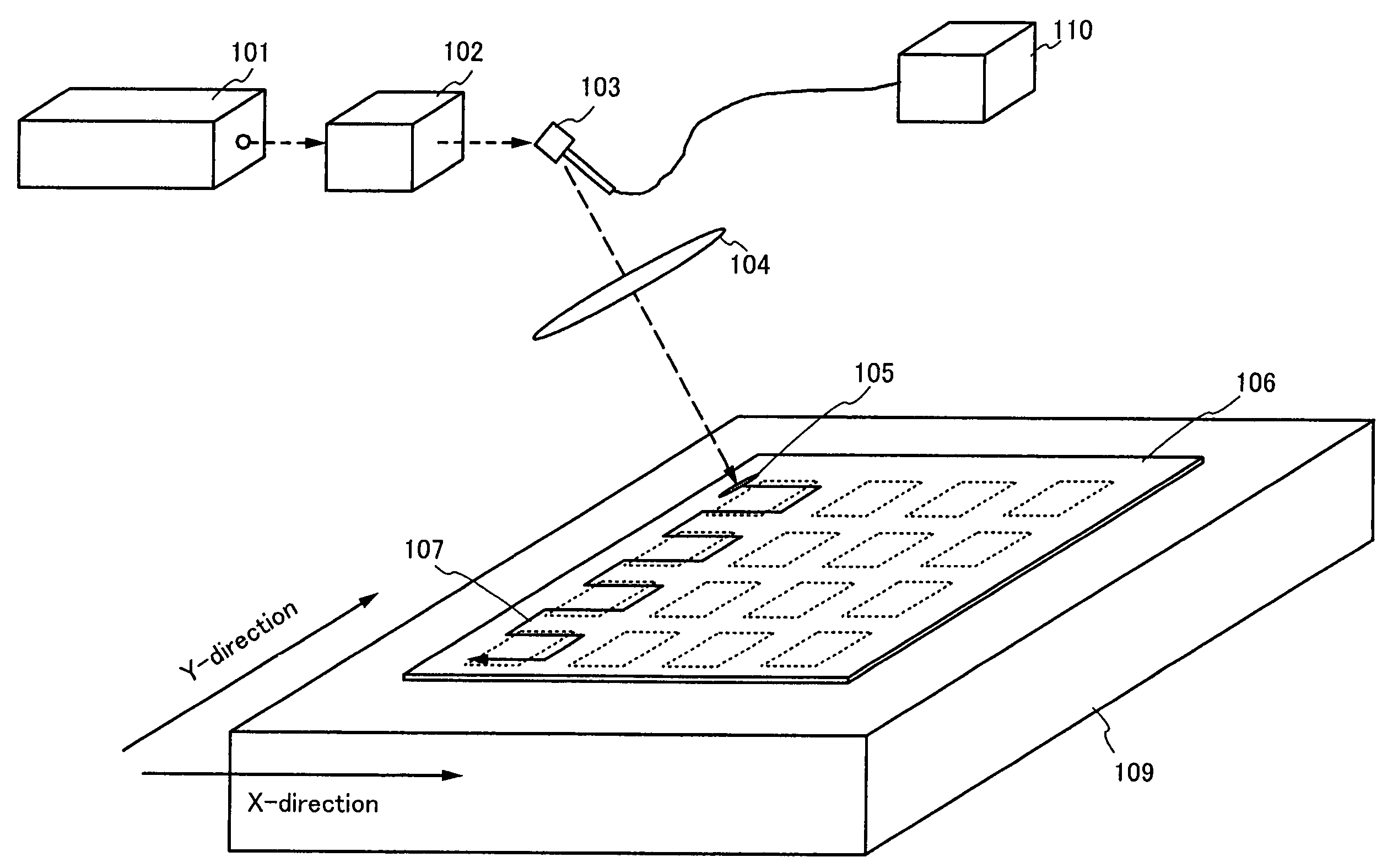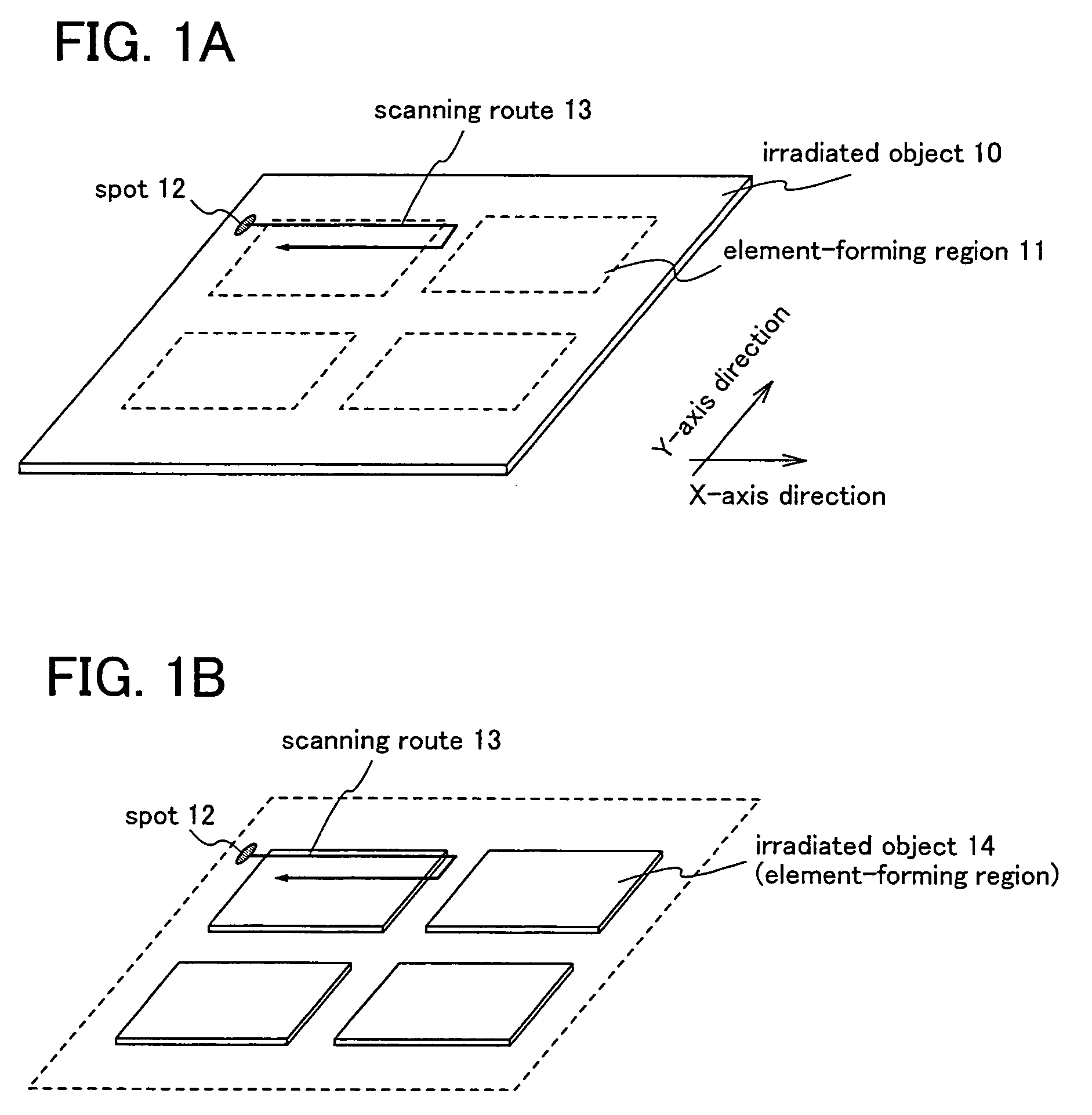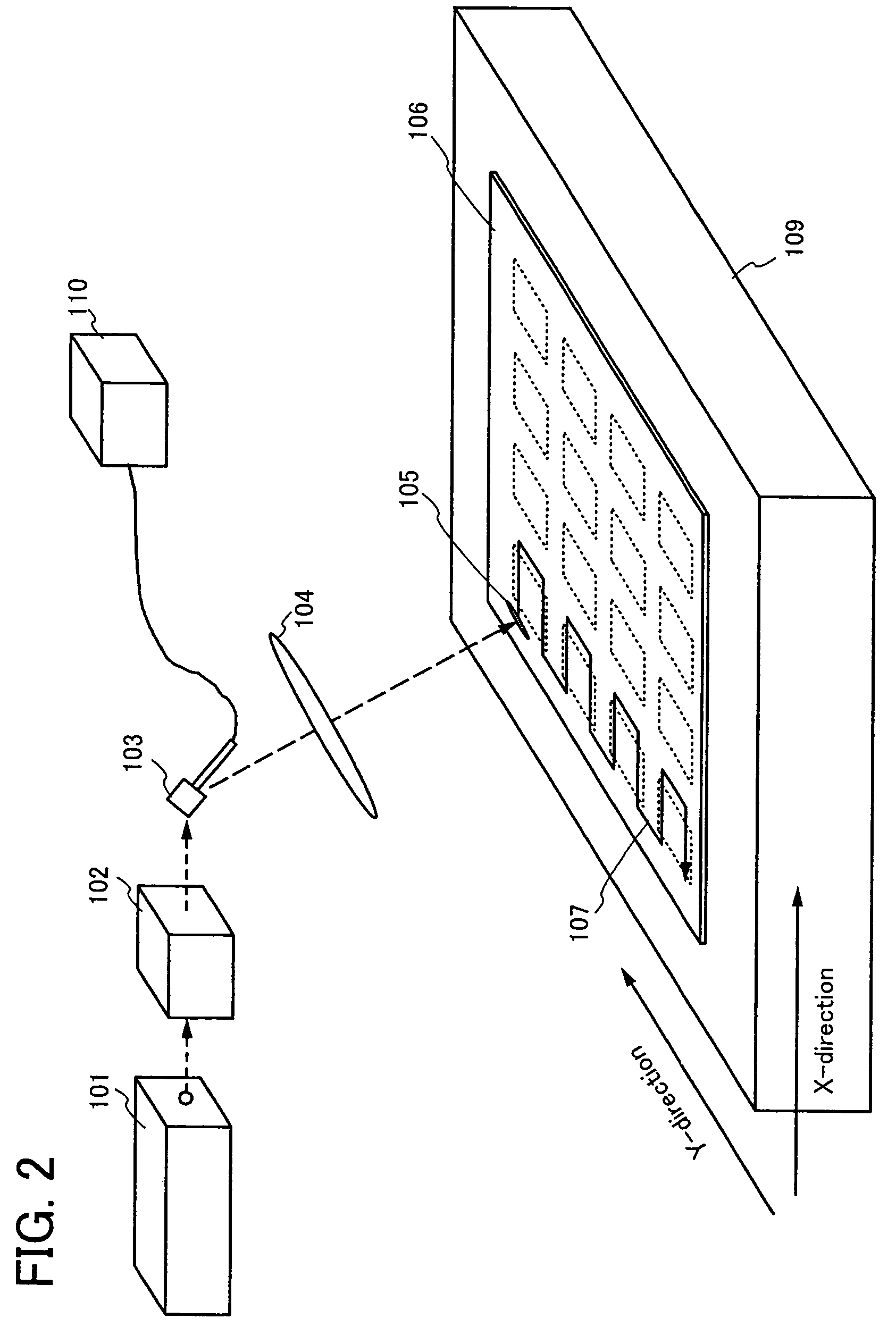Method for manufacturing a semiconductor device where the scanning direction changes between regions during crystallization and process
a semiconductor device and crystallization process technology, applied in the direction of manufacturing tools, solid-state devices, laser beam welding apparatus, etc., can solve the problems of long irradiation time, inability to perform laser processing uniformly, and inability to achieve uniform crystallinity, uniform electric characteristic, and uniform crystallinity. uniform
- Summary
- Abstract
- Description
- Claims
- Application Information
AI Technical Summary
Benefits of technology
Problems solved by technology
Method used
Image
Examples
embodiment mode 1
[0044]The present embodiment mode explains the case in which the laser processing is performed by employing the laser as the light source to the irradiated object in which four element-forming regions are formed.
[0045]In a perspective diagram shown in FIG. 1(A), four of an element-forming regions 11 are provided in an irradiated object 10. And relative movements of the laser beam and the irradiated object move a spot 12 along a scanning route 13. The scanning route 13 is in XY directions where a major axis direction (X-axis direction in FIG. 1(A)) and a minor axis direction (Y-axis direction in FIG. 1(A)) are combined. On this occasion, for example, the first scanning means (for example, the galvanometer mirror or the polygon mirror) moves the spot in the major axis direction and the second scanning means (for example, an XY stage) moves the irradiated object in the minor axis direction. As thus described, the laser processing can be performed to the whole irradiated object having a...
embodiment mode 2
[0060]The present embodiment mode explains a beam irradiation apparatus, which means a laser irradiation apparatus, and a beam irradiation method, which means a laser irradiation method using a CW laser as one mode of the beam, with reference to FIG. 2. In addition, the present embodiment mode explains one example in which a semiconductor film is used as the irradiated object and a galvanometer mirror is used as the first scanning means.
[0061]Initially, the CW laser emitted from a laser oscillator 101 is extended long through an optical system 102 and shaped into linear. Specifically, the laser beam can be shaped into linear by transmitting through a cylindrical lens and a convex lens in the optical system 102.
[0062]After that, the laser beam shaped into linear (also referred to as a linear beam) is incident into a semiconductor film 106 through a galvanometer mirror 103 and an fθ lens 104. On this occasion, the linear beam is adjusted so as to form a spot 105 of the laser (hereinaf...
embodiment mode 3
[0073]This embodiment mode explains the case to enhance productivity of the integrated circuit having the thin film transistor by performing the laser processing to the semiconductor film formed over the substrate with a laser irradiation apparatus including a plurality of laser oscillators.
[0074]FIG. 3 shows an example to employ three CW laser oscillators 201, three telecentric fθ lenses 204, three galvanometer mirrors 203, and three pairs of slits 207 to perform the laser-sized processing, that is, the laser annealing to a semiconductor film 205 formed over a large substrate having a size of 1500 mm×1800 mm. It is noted that FIG. 3(A) is a top view and FIG. 3(B) is a side view.
[0075]An oxide film (a silicon oxide film such as SiON or SiO2) is formed over a substrate as a base film and then a semiconductor film is formed thereon sequentially. The semiconductor film may be formed of the material mainly consisting of silicon by CVD, sputtering, or the like. In this embodiment mode, a...
PUM
| Property | Measurement | Unit |
|---|---|---|
| size | aaaaa | aaaaa |
| width | aaaaa | aaaaa |
| angle | aaaaa | aaaaa |
Abstract
Description
Claims
Application Information
 Login to View More
Login to View More - R&D
- Intellectual Property
- Life Sciences
- Materials
- Tech Scout
- Unparalleled Data Quality
- Higher Quality Content
- 60% Fewer Hallucinations
Browse by: Latest US Patents, China's latest patents, Technical Efficacy Thesaurus, Application Domain, Technology Topic, Popular Technical Reports.
© 2025 PatSnap. All rights reserved.Legal|Privacy policy|Modern Slavery Act Transparency Statement|Sitemap|About US| Contact US: help@patsnap.com



